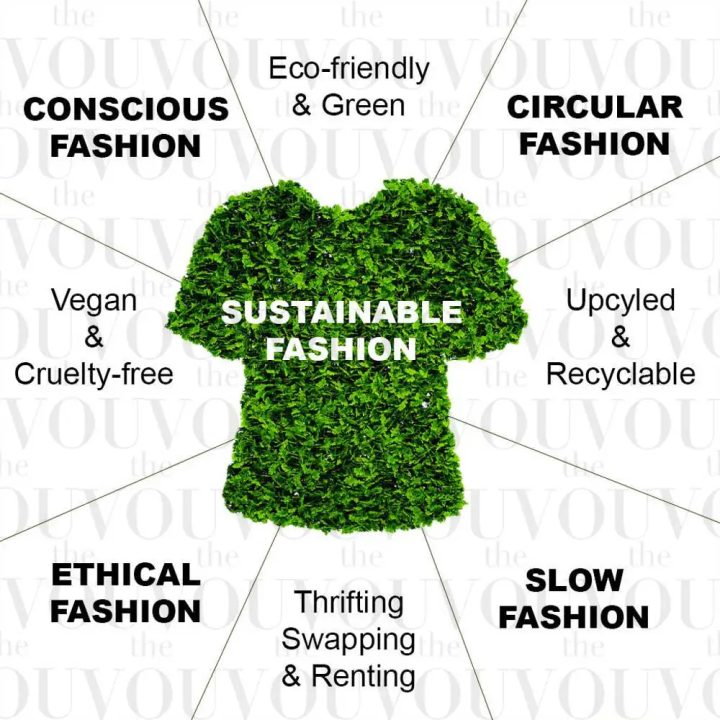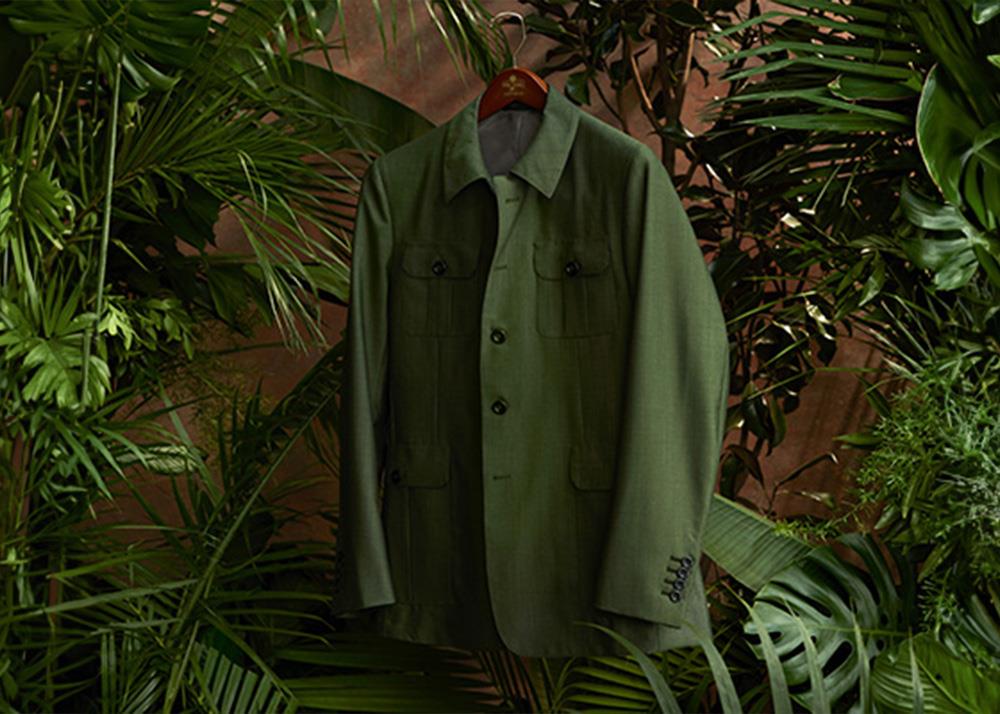Cape Town Sustainable Fashion: Redefining Design with Moral Choices
Cape Town Sustainable Fashion: Redefining Design with Moral Choices
Blog Article
Keep Ahead of the Curve by Discovering Cutting-edge Style Fads
In an industry as dynamic as style, staying ahead entails greater than simply following current fads-- it requires an exploration of advancement. Smart fabrics, as an example, are transforming garments into functional work of arts, while 3D printing is reinventing design processes with its adjustable, waste-reducing abilities. As sustainability becomes a foundation, innovations like green materials and circular fashion techniques are reshaping environmental obligation - Cape Town Sustainable Fashion. Additionally, the convergence of technology and fashion declares a brand-new age of consumer involvement. Just how, after that, can these arising trends redefine the future of fashion, and what ramifications do they hold for brand names seeking to thrive in this developing landscape?

Welcoming Smart Textiles
Over the last few years, the fashion industry has actually witnessed a transformative change with the integration of wise fabrics, an innovative advancement that mixes innovation with textile. This development represents not just a fusion of aesthetic appeals and capability but also a significant leap in the direction of sustainability and customization in fashion. Smart textiles, also called e-textiles, installed advanced electronics such as sensors and conductive strings within the textile, allowing garments to communicate with the atmosphere or the user.
These fabrics are designed to monitor physiological criteria, such as heart price or body temperature level, providing real-time health analytics. Beyond wellness applications, wise fabrics are likewise being made use of for flexible apparel, which can transform shade or pattern in response to ecological stimulations, therefore offering a vibrant fashion experience.
Additionally, the development of energy-harvesting textiles that generate power from movement or sunshine is leading the way for self-dependent wearable modern technology. This technology is appealing to ecologically mindful consumers and developers intending to lower the environmental impact of style. As research study and development in this field advancement, wise fabrics are expected to end up being progressively widespread, reshaping the landscape of modern-day fashion with their multifunctional abilities.
The Rise of 3D Printing
Reinventing the manufacturing landscape, 3D printing has emerged as a game-changer in the apparel industry. This innovative modern technology has enabled developers to press the limits of imagination, producing detailed and tailored garments that were previously unimaginable. By leveraging digital design and additive production, 3D printing helps with the development of complicated geometries and patterns, permitting designers to experiment with new structures and frameworks.
A significant benefit of 3D printing in fashion is its capacity to produce on-demand, minimizing waste and lowering supply needs. This effectiveness not just maximizes production processes however likewise permits for rapid prototyping, allowing developers to bring their visions to life in a shorter duration. In addition, 3D printing supports modification somewhat unmatched by conventional methods, providing tailored fits and unique designs tailored to individual consumer preferences.
The rise of 3D printing has actually also democratized style, making it easily accessible to arising developers that can currently make high-quality pieces without significant financial investment in traditional production infrastructure. As innovation continues to advance, the fashion business is positioned to harness the complete potential of 3D printing, exploring new materials and techniques that will certainly redefine how style is developed and created.
Sustainable Style Advancements
As the fashion business grapples with journalism demand for ecological duty, sustainable style technologies have actually arised at the center of transformative modification. The growing awareness of environmental effect has fueled a change in the direction of more eco-conscious techniques and materials. Developers and brands are currently focusing on sustainability, integrating methods that minimize waste and decrease carbon footprints.
One substantial growth is the rise of round style, which stresses recycling and upcycling to extend the lifecycle of garments. This method not only decreases waste yet also motivates consumers to adopt a much more conscious method to garments intake.
Another advancement lies in the adoption of ingenious dyeing methods that use all-natural dyes or waterless procedures, consequently lowering the large quantities of water and chemicals typically utilized in textile dyeing. Furthermore, improvements in biotechnology have actually brought about the creation of lab-grown natural leather and fabrics, providing environmentally pleasant and cruelty-free choices to conventional products. With these pioneering efforts, the fashion business is making purposeful strides in the direction of an extra lasting future.

Tech-Integrated Garments
Tech-integrated clothing stands for a revolutionary blend of fashion and innovation, improving how individuals interact with their clothing. This cutting-edge domain is marked by the incorporation of wise textiles and ingrained electronic elements, improving both capability and visual appeal. From physical fitness trackers embedded in sports apparel to warmed jackets regulated using smartphone apps, tech-integrated apparel provides customers unmatched comfort and flexibility.
Pioneering brands are driving this fad, focusing on creating garments that react to ecological stimuli or individual commands. For circumstances, some garments can transform color or pattern in action to temperature level shifts, while others integrate biometric sensing units to keep track of wellness metrics like heart price or stress and anxiety levels. The smooth combination of modern technology into textiles also expands to ecological sustainability, with efforts to create self-cleaning materials or garments that readjust to weather conditions, hence decreasing the need for several layers.
Additionally, the development of wearable modern technology is not simply limited to apparel however expands to devices like watches and eyeglasses, further widening the range of tech-integrated fashion. As the industry remains to innovate, the capacity for personalization and customization in garments grows, providing consumers distinct, tech-enhanced fashion experiences that satisfy their private requirements and choices.
Future of Virtual Style
Recently, the future of online style has become a transformative force within the industry, leveraging innovations in digital innovation to redefine just how fashion is produced, experienced, and taken in. By integrating increased truth (AR), virtual reality (VIRTUAL REALITY), and 3D design tools, designers can currently craft interactive and immersive experiences that transcend traditional style boundaries. Digital style enables for the development of garments that exist only in digital settings, supplying limitless opportunities for technology without the constraints of physical production.
This digital shift not only offers chances for imaginative expression yet likewise addresses sustainability worries intrinsic in typical fashion techniques. Cape Town Sustainable Fashion. By removing the need for physical sources, online style reduces waste and reduces carbon impacts. Moreover, the surge of digital fashion straightens with the increasing consumer demand for customized click to investigate and special experiences, as virtual garments can be tailored and tailored to specific choices effortlessly

Final Thought
The fashion sector's future depend on the integration of sustainable techniques and ingenious technologies - Cape Town Sustainable Fashion. Smart textiles and tech-integrated clothing are improving performance, while 3D printing offers chances for personalization and view it now waste reduction. Sustainable style, via green materials and round approaches, shows a dedication to environmental stewardship. Furthermore, online style is positioned to redefine consumer communications. Adjusting to these fads is vital for brand names seeking to stay affordable and pertinent in this swiftly advancing landscape.
In current years, the style sector has witnessed a transformative shift with the combination of smart fabrics, an advanced advancement that mixes technology with fabric.As the fashion market grapples with the pressing demand for ecological obligation, lasting fashion advancements have emerged at the leading edge of transformative modification.In recent her comment is here years, the future of online style has emerged as a transformative pressure within the market, leveraging improvements in electronic innovation to redefine just how fashion is created, experienced, and consumed. The surge of online fashion aligns with the raising consumer demand for individualized and unique experiences, as virtual garments can be customized and customized to individual choices with convenience.
The fashion industry's future lies in the combination of cutting-edge modern technologies and lasting methods.
Report this page